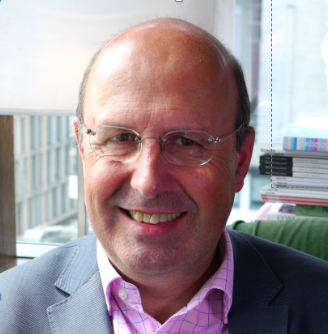You can sign up to our LinkedIn newsletter here.
It is certainly better to transition to a Portfolio Executive workstyle sooner rather than later. When I first started working with people wanting to transition to a Portfolio Executive workstyle, the people that I was working with tended to be 5 to 10 years younger than me. They tended to be in their fifties or their mid-forties. But as things have gone on, I’ve increasingly started to engage with people who are later in their lives: people who are looking to transition to a Portfolio Executive workstyle in their late fifties, and even their early sixties. How late can you leave it before you start becoming a Portfolio Executive? Is there a date at which it’s no longer relevant to you and not even worth trying? Let me address this around four considerations:
1) How much longer do I want to continue working for?
If you are 62 or 63 today, and you only want to work until the state retirement age of 67, then you may wonder whether it’s worth leaving your current employment and starting a new venture, which is going to take a couple of years to fully establish, and then just two years later, wind it down. You probably need to give three months notice to your current employer and our recommendation is that you spend three months preparation before you give your notice. You should expect it to take up to a year to replace your current income with your Portfolio Executive income. Will the time left in 18 months from today, make the effort worthwhile?
2) Have you got a role today which it at risk?
You know that organisations regularly restructure and remove senior executives. Even if the job feels safe today, what will happen if your boss is replaced, your division is sold or merged, or a new CEO wants to change the culture? You may find it very challenging to find your next job. In the best of times, the rule of thumb is to allow a month for each £10,000 of salary you are looking for in your new role. But how many employers are going to take you on when you’re in your sixties and they imagine you are planning to retire soon? To bridge the gap between today and when you want to retire, a Portfolio Executive workstyle will form a crucial part of your transition plan into retirement.
Perhaps you feel you’ve had enough where you are. You’re bored. You never get any opportunities. You’re not enjoying the travel. You’re ready to take a break. The risk you face is your struggle to survive the time to retirement. Consider the alternatives that can be quick fix alternatives to a Portfolio Executive workstyle:
Interim
One quick fix is to get interim appointments. It may be that with the skills you’ve got, you can get interim positions which will last between 6 to 12 months. Yes, you’ll sacrifice the income for the gaps between your assignments, which may be longer than you’d hope because of your age, but it will give you new opportunities.
Associate Consultant
If you have a rich set of relationships, you could find a consultancy where you can join them as an associate. You start working with them as freelance consultant, but they find you work. If you can find two or three different consultancies this could provide you with five to fifteen days of work a month. The consultancy will probably want to charge clients up to double what they pay you and you will have to spend unpaid time building relationships and helping them to win work. You could get work relatively easily and, for the next three or four years you have regular income, doing interesting stuff, with interesting people in a new environment. Don’t underestimate the amount of effort required to build and maintain the right relationships with consultancies. You need to make sure that you are front of mind when they look at client opportunities.
Use a Broker
Rather than building a Portfolio Executive workstyle yourself, find a broker who’s going to find part-time director assignments on your behalf. They will usually take 40 percent of what they charge the client. The fee they charge the client will be less than you could earn when you go direct as Portfolio Executive. You’ll have to spend time again investing in building relationships with the broker and being part of a beauty parade pitching to potential clients. But you’re not having to find your own work. Beware: there are some professional skills for which you will struggle to find a broker with an existing commitment to taking your skills to market.
Become a Coach
Perhaps you believe that training as a coach will give you a golden parachute from corporate life. The cost of coach training to become an accredited coaching professional can be tens of thousands of pounds and take more than a year to complete. Finding enough work could be very difficult: typical coaching relationships run for three to six months with a commitment of two or three hours a month. If you want to do three sessions a day, twenty days a month then to maintain sixty sessions a month you will need a roster of thirty clients. If they stay three months on average you will need to recruit ten new clients per month or 120 new clients a year. Most people will very quickly exhaust their existing network of friends and former colleagues. Worse, the huge growth of new coaches entering the market can drive hourly rates down to a level that would make a plumber wince.
3) You want to continue working beyond your state retirement age.
You want to do something productive and rewarding into your early seventies and maybe beyond. In this context, it makes a huge amount of sense to invest in building a Portfolio Executive workstyle for several reasons:
You can bring real value to your clients. Within twelve months you should be able to completely replace your current income. Within two years you can build a rewarding and sustainable portfolio of clients that exceeds your previous salary for as little as twelve fee earning days per month. You will be able to pace the amount of commitment you make to fee earning work. As you get older, you can reduce the number of days a month you work for clients. Building up a portfolio of four to six clients, when you do between one to three days a month for each client, will completely replace your previous salary and give you eight days a month for other activity. In the early days of your Portfolio Executive workstyle some of this time will be for business and practice development: finding new clients, increasing your profile and re-skilling or developing new skills so you continue to be relevant. But, over time, you’ll find the amount of effort required for this reduces.
If you’ve got a portfolio of five clients, and, on average, you keep them for 5 years. Then you only need one new client a year. The key to sustaining that workstyle beyond your seventies, if you choose to, is to seek to transition some of those relationships from part-time executive relationships to non-executive or mentoring relationships. As a mentor, you might have a commitment of 2 to 4 hours a month supporting a full-time executive, replacing your role at a client where you are originally a part-time executive. As a non-executive director, you might be attending four to six board meetings a year with a total commitment of around a day a month. By investing in building a Portfolio Executive workstyle now, you create a range of options in the future.
4) You need to make a radical shift to your working life because of some changing family circumstances.
Perhaps you’ve got new care responsibilities at home or for an ageing relative. Perhaps you need to relocate. There are a range of compelling reasons that mean that you need to end your relationship with your current employer which can be forced upon you by external circumstances.
In this case you are likely to have two things going on at once. Firstly, you are making the transition to a new lifestyle, force majeure. Secondly, you are needing to find future work opportunities, so that you can maintain your income despite the circumstances. Starting on the Portfolio Executive journey can be a helpful way of taking your time in transitioning your income, as you continue to manage changes in the workstyle.
Recently, I was having a conversation with a woman who is based in Sweden and needs to relocate back to the UK. She recognises that the full Portfolio Executive workstyle is the right answer for her when she lands back in London. Finding the kind of full-time permanent role that she’s got at the moment will not suit her new circumstances. It makes sense for her to spend some time doing the preparation and development work for a Portfolio Executive workstyle, while she does all the other things she needs to do to transition her whole life to London.
It maybe you are suffering from a critical illness that demands a lot of treatment time or sorting out care for somebody else. Despite this you may find that you can set aside some of your time to build your Portfolio Executive workstyle as you transition. I worked with a woman who was an expert on charity fundraising. She had new responsibilities for ageing parents and she’s transitioned to ensure she is available as necessary. She has moved away from project-based consulting which had lots of project deadlines that limited her flexibility. The Portfolio Executive workstyle enables her to manage her time more effectively. The amount of on-site contact time for any one client was reduced. The long-term relationships, she has built, mean she can operate in a less time critical way and avoid the rapid response often expected of new clients or demanding project deadlines.
Conclusion
It can make sense to become a Portfolio Executive into your sixties. But make a proper assessment of the reasons you want to make the transition, and the length of time you want to sustain your Portfolio Executive workstyle. If you wait too long you may find you have a difficult choice to make in your sixties.

Charles McLachlan is the founder of FuturePerfect and on a mission to transform the future of work and business. The Portfolio Executive programme is a new initiative to help executives build a sustainable and impactful second-half-career. Creating an alternative future takes imagination, design, organisation and many other thinking skills. Charles is happy to lend them to you.
